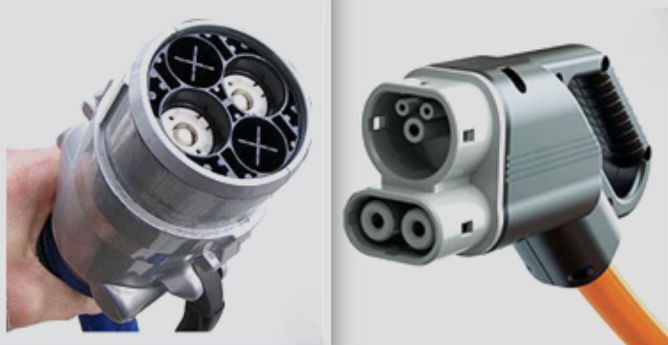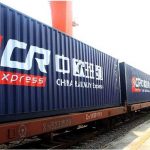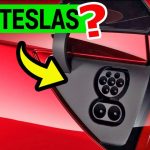EV Fast Charging System Standards – CHAdeMO, CCS, SAE Combo, Tesla Supercharger
EV Fast Charging System Standards – CHAdeMO, CCS, SAE Combo, Tesla Supercharger etc.
(E-mail us at info@bestplusgroup.com to Get a Quote)
Fast Charging makes electric cars more useful because of the reassurance drivers get knowing they can quickly recharge, and the faster effective trip speed. It seems that car owners with fast-charge capable cars, with enough fast charging stations around them, feel capable of taking longer trips.
While fast charging is often unnecessary, because the optimum charging rate varies depending on the usage scenario the driver currently faces, it sure is convenient that fast charging stations give an almost complete recharge in under an hour. Unlike cars with 6 kiloWatt level 2 charging systems (20-25 miles of range per hour of charging), fast charging’s faster charge rate (50 kiloWatts or more) can supply 100 or more miles of range per hour of charging. A significant fast charging network available should make electric cars more attractive than otherwise, and lead to higher adoption rates.
(E-mail us at info@bestplusgroup.com to Get a Quote)
In some cases it means electric car drivers can take real road trips — blowing up one of the negative electric car stereotypes. (like being be limited to driving a short distance from your home)
What we have in 2015 is a multi-way electric car fast charging standards battle. Consumers are caught in the middle not knowing which fast charging standard to support, not knowing enough to know how to choose between them. Fortunately some of the automakers appear to be acting to soften the pain of incompatible fast charging standards by deploying multi-protocol fast charging stations.
What we deserve is ubiquitous fast charging stations with a unified fast charging protocol. Our gasoline powered brethren have a unified standard for gasoline pump nozzles, we deserve the same for fast charging.
With multiple competing fast charging standards adapters would be a useful product, to enable fast charging from an otherwise incompatible charging station. While Tesla Motors is selling a CHAdeMO-to-Tesla adapter, it seems such adapters might have limited popularity due to expense and deployment of dual-protocol charging stations.
CHAdeMO – (Nissan, Mitsubishi, Kia)
CHAdeMO is the trade name of a quick charging method for battery electric vehicles delivering up to 62.5 kW of high-voltage direct current via a special electrical connector. It is proposed as a global industry standard by an association of the same name.
It was defined by the CHAdeMO Association – Purpose/focus CHAdeMO Association aims to increase quick-charger installations worldwide and to standardize how to charge the vehicles. – (chademo.com) http://chademo.com – CHAdeMO was formed by The Tokyo Electric Power Company, Nissan, Mitsubishi and Fuji Heavy Industries (the manufacturer of Subaru vehicles). Toyota later joined as its fifth executive member. CHAdeMO is an abbreviation of “CHArge de MOve”, equivalent to “charge for moving”. The name is a pun for “O cha demo ikaga desuka” in Japanese, translating to English as “How about some tea?”, referring to the time it would take to charge a car.
CHAdeMO is a form of DC Fast Charge, for high-voltage (up to 500 VDC) high-current (125 A) automotive fast charging via a JARI DC fast charge connector. The connector is specified by the JEVS (Japan Electric Vehicle Standard) G105-1993 from the Japan Automobile Research Institute. The connector includes two large pins for DC power, plus other pins to carry CAN-BUS connections.
(E-mail us at info@bestplusgroup.com to Get a Quote)
SAE Combo Charging System (CCS) – (BMW, GM, VW, and other carmakers)
When tasked with developing a fast charging system, the SAE J1772 committee basically took the existing J1772 plug and added on two large pins for high power DC. The upper part is the ordinary J1772 plug used in the USA, and the lower portion are the two DC power pins.
The first point allows car makers more design freedom by requiring only a single hole in the skin of the car (or, a smaller hole) for recharging. The charging cord is also lighter weight than the CHAdeMO, and easier to use.
The second point – see the image above labeled “IEC DC Charging Systems” – has to do with the control protocol between the car and the charging station. We’ll discuss this below, but CCS uses PLC for that communication, whereas CHAdeMO uses CAN. CAN is a data protocol used between components inside cars, while PLC is part of the smart grid protocols.
Tesla Supercharger
The Tesla Supercharger system uses a single port supporting, using a sleek slender cable and charging connector, every possible charging situation one can think of:
The Tesla mobile charging unit comes with adapters for every kind of power outlet, from 120 volt 12 amp (NEMA 5-20), through to 240 volt 50 amp (NEMA 14-50).
Via an adapter, it can connect to J1772 charging stations
At a Supercharger station (pictured above) it can receive DC fast charging at up to a 120 kiloWatt rate
It means a Tesla Model S or Model X owner can get rapid charging in a wide range of situations.
Tesla Motors also sells an add-on adapter allowing a Model S/X owner to recharge at a CHAdeMO station. Tesla Motors does not sell any kind of adapter allowing owners of CHAdeMO or CCS cars to recharge at a Supercharger station, however.
(E-mail us at info@bestplusgroup.com to Get a Quote)
Unique
We can do what you can not do
Knowledge
We know about your product
Efficiency
We work fast and efficiently
Easy Communication
You can contact us at any time 24/24 – 365/365
Professional
A job well done is the most important thing for us
Website: www.bestplusgroup.com
Email: info@bestplusgroup.com

 Previous Post
Previous Post Next Post
Next Post

